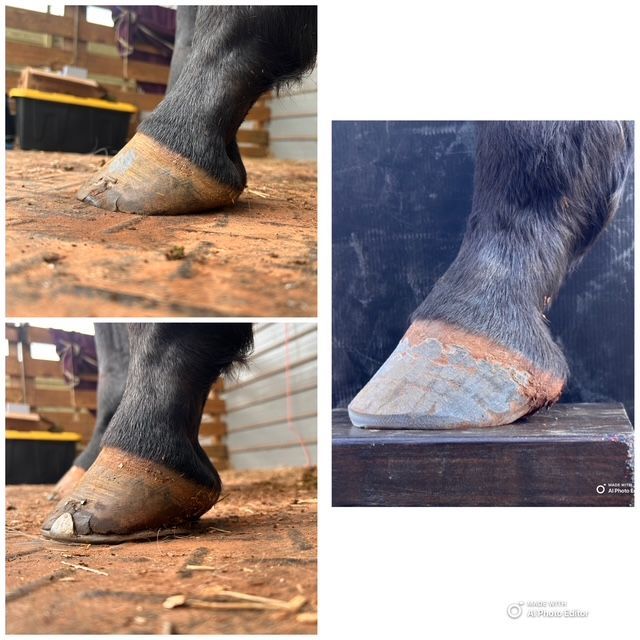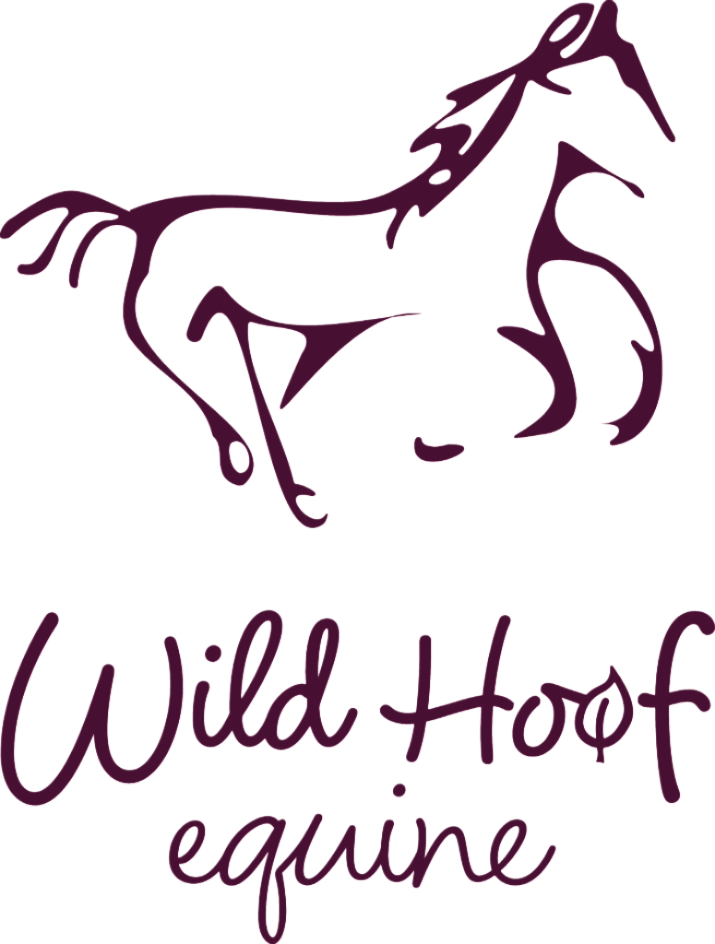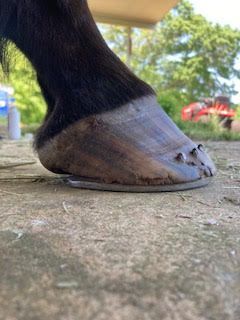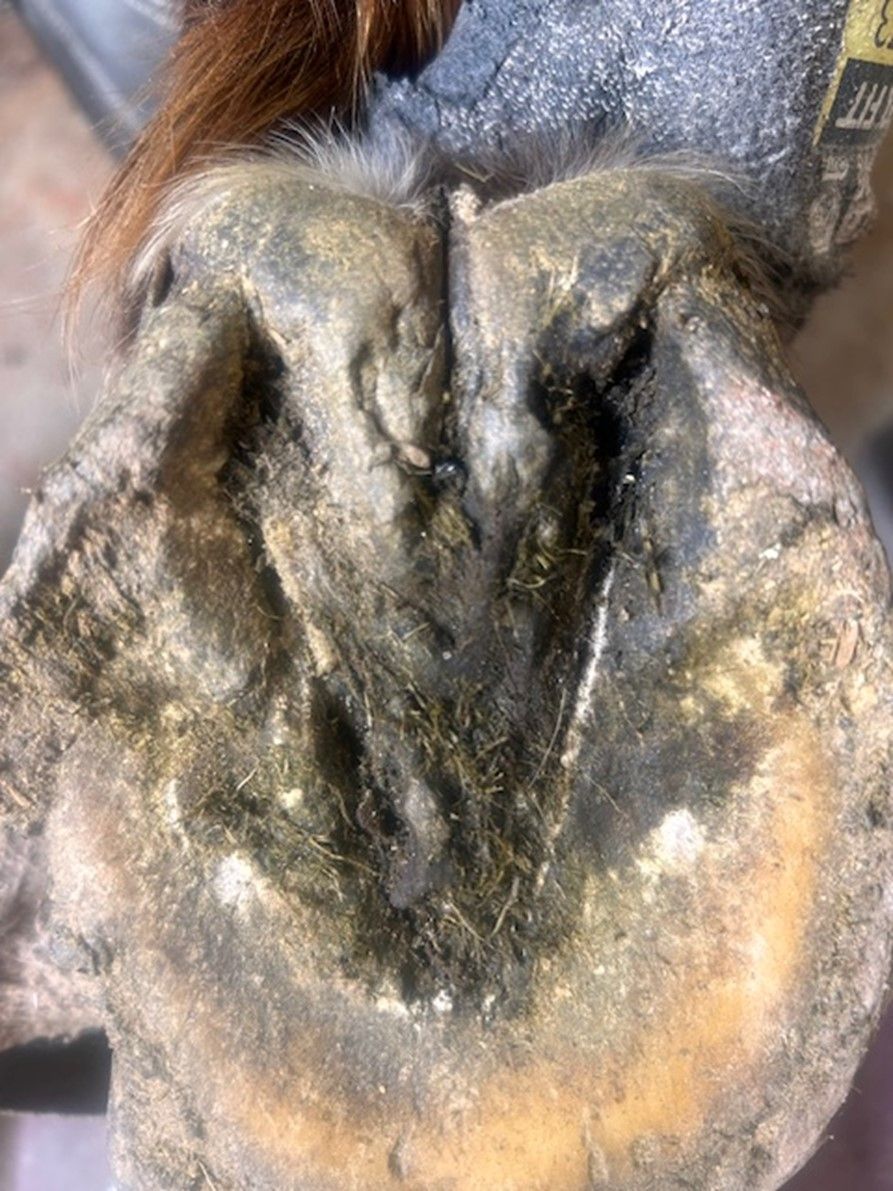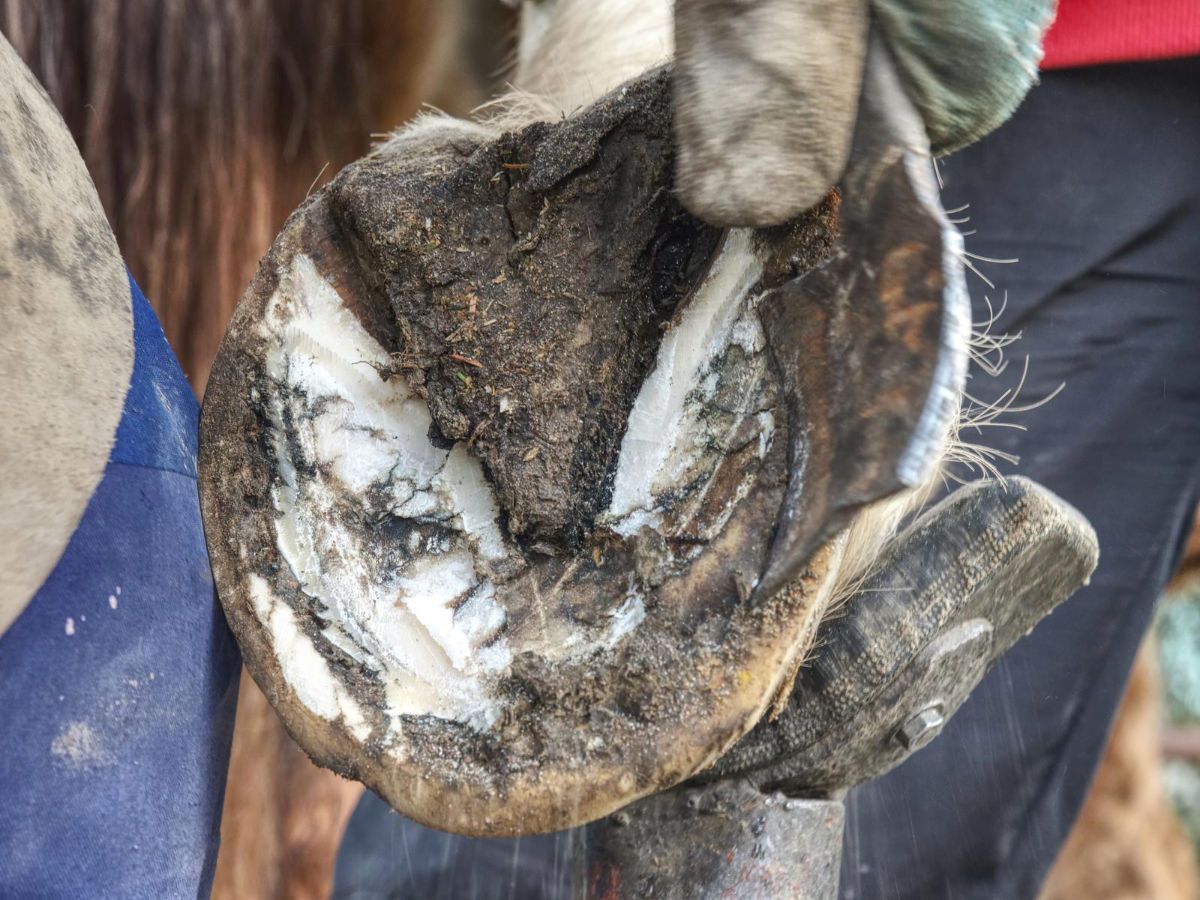Understanding Negative Palmar/Plantar Angles and Caudal Failure in Horses
Understanding NPA and Caudal Failure
Caudal failure refers to a regression in the integrity, structure, and function of the back of the foot. Not always, but typically this is associated with low or negative palmar (front feet) or plantar (hind feet) angles. NPA = negative palmar/plantar angle. In my practice, I consider low angles zero to 2-3 degrees, while anything negative obviously is below zero degrees. Ideal palmar/plantar angles range from 4-8 degrees, but this depends on the horse. I have some horses who prefer to be on the lower end of this range, while others appreciate to be at the higher end.
Another factor to consider is the hoof pastern axis (HPA). The hoof-pastern axis (HPA) is an imaginary line that runs from the center of the pastern (the area below the fetlock) down through the hoof, when viewed from the side. It's a key indicator of hoof balance and alignment in horses. Ideally, this line should be straight and aligned with the dorsal (front) hoof wall, indicating proper weight distribution and minimizing stress on the limb. Deviations from this straight line, known as broken-back or broken-forward HPA, can lead to various lameness issues and strain on the musculoskeletal system
Ideal HPA:
When viewed from the side, the pastern and hoof should form a straight line that aligns with the dorsal hoof wall. (Figure A)
Broken-forward HPA:
This occurs when the hoof angle is more sloping than the pastern. It can be seen in club feet and puts excessive stress on the toe area. (Figure B)
Broken-back HPA:
This occurs when the hoof angle is more upright than the pastern, creating a break in the line. This often results from long toes and low heels, placing excessive strain on the back of the foot, including the navicular bone and deep digital flexor tendon. (Figure C)

Often times, low/negative angles or caudal failure can be associated with a few different presentations:
- A steep downward sloping down hairline with matching downward sloping lines on the caudal aspect of the wall. This suggests that the internal structures are underdeveloped, weak, and essentially collapsed. You can often see the caudal foot “spilling out the back” over the heels. This is seen on Figure 1 at the start of the article.
- Prolapse of the frog. This can be seen by the deep V of the hairline. Often if the frog does not have sufficient support and is suspended (not uncommonly seen in an open heel perimeter shoe), it can prolapse (or sag) and can be proud of the heels as it seeks stimulation/contact from the earth. It can be very uncomfortable coming out of this setup. I lean on cloud boots for a few weeks when rehabbing these soft tissues back to their rightful places.
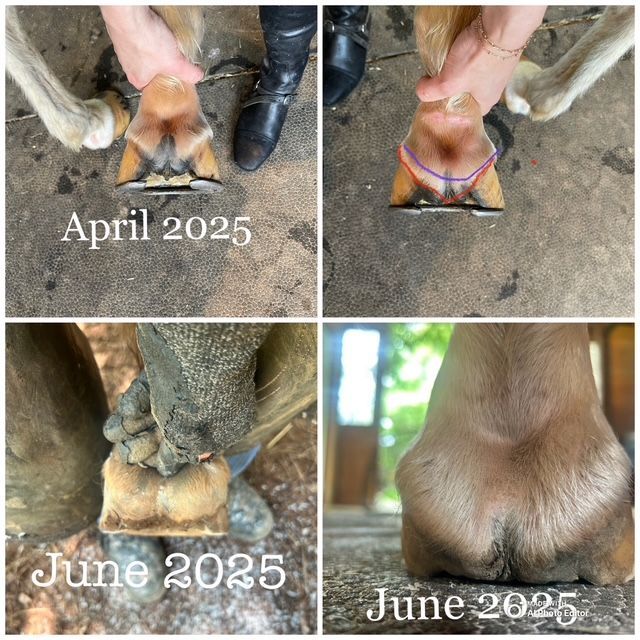
- Extremely thin or weak digital cushion. The back of the foot should be robust and voluminous. On a good footed horse you may have heard me call it a “Big Mac foot”, just a full digital cushion. The digital cushion is the foot’s shock absorber. Weak digital cushion = poor shock absorption, which means other structures are taking the brunt. Cue the cascade of distal limb and body issues.
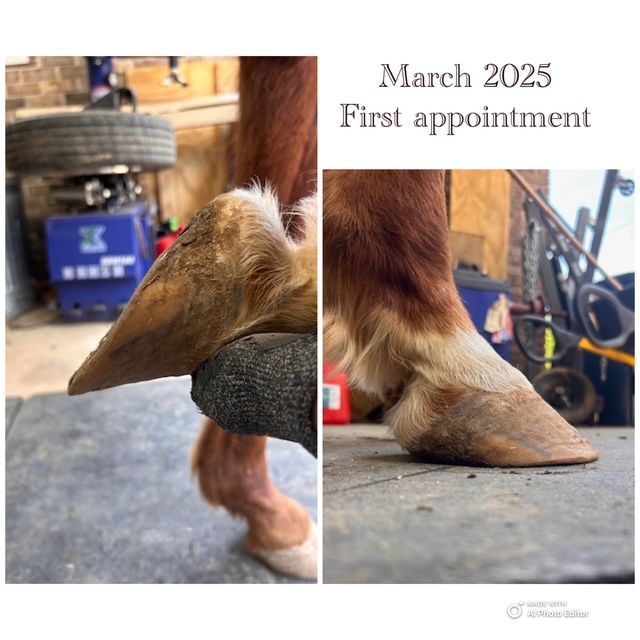
- Poor landing. The foot is designed to land heel first. An underdeveloped caudal foot is not comfortable to land on, so they tend to land toe first. Toe first landings undermine the integrity of the caudal foot and can cause an atrophy and waning of soft tissue health, which perpetuates the pathology. This includes the frog, so watch for a thinning frog or disease (thrush). Thrush is an infection - it can hurt. If it hurts, they won’t land on it… again cue cascade of issues. (Check out The Red Mare Project podcast Episode 3 Heal Pain Heartache on Apple Podcast or Spotify)
Issues highly correlated with low/negative palmar/plantar angles:
*Please note that this is not an exhaustive list. Furthermore, each case is unique so it’s hard to determine if NPA caused the body issues or if it was the inverse – it is best practice to address all pathologies with the horse’s care team to give the horse the best chance of rehabilitation.
- Pathological posture: Splayed out or camped out/under. A horse camped under is much more common. This is often referred to as “goat on a rock”. A horse camped out may be experiencing a more acute situation (laminitis) or navicular issues. Both are affiliated with a whole slew of issues (this will be discussed in another article).
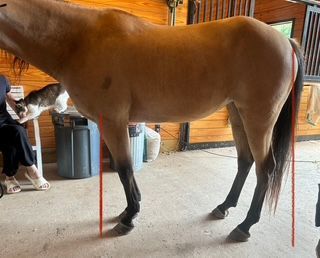
- Back pain, particularly in the lower back
- Muscle tension
- Neck and poll pain
- Excess torque on distal limb soft tissue, thus making them more vulnerable to injury.
- Note: Rarely do soft tissue injuries in the limb happen suddenly. It’s 1000 unbalanced steps that compound until there is failure.
- Behavior changes: reluctance to go forward, inability to fully/properly engage, bracing of the neck and/or back, bolting, you name it. It depends on the secondary effects (those just listed above) from the NPA.
- GI distress/ulcers from pain/stress.
- Dental changes due to the change of flight pattern from poor balance. The feet and teeth are highly innervated. Dental and footwear pattern often mimic each other quite closely. (this will be discussed in another article)
What to do?
A balanced trim to mitigate angles as effectively as possible. If this is an extreme case, radiographs are always appreciated. Trimming is a subtractive process. At times, a prosthetic (AKA shoeing) is needed to ADD to the foot to achieve balance. This is commonly seen with low/negative angles if there is not enough foot to achieve balance, or appropriate angles, with just a trim.

Ensure appropriate frog support and stimulation. This can be achieved in a variety of ways: boots, shoes (with proper frog support) or bare (if appropriate). With appropriate input/stimulation to the frog, of course paired with a heel first landing, the soft tissues (including the digital cushion) will slowly regenerate and strengthen. This is physical therapy for the distal limb. At times, a wedge pad is appropriate to build additional depth and to achieve an improved palmar/plantar angle.
If a horse is transitioning out of a perimeter shoe without frog support, and there is frog prolapse, it is recommended to boot the horse for a few weeks. This is a gentle way to guide the soft tissue back to their appropriate places before going to shoes or remaining bare. Shoes with frog/solar support offer relatively consistent input – when a horse is booted, each flight phase of the step allows momentary relief of the solar support given from the boot. Meaning the pressure is released when their foot is in flight while walking or laying down – it’s not a constant input of pressure. This consistency of a shoe is great when the tissues are in their rightful places but can be a bit much if there is prolapse.
Facilitate heel first landings via a balanced trim and appropriate shoeing package or booting to rehab the caudal foot back to health.
Consider appropriate dietary changes to better feed the hoof. Hoof quality is made in the feed room. Consider testing your hay and determining which minerals your horse may be low in. Keep an especially close eye on copper and zinc. (to be discussed in a future article)
MOVEMENT: turnout. Forage, friends, and freedom. Physical therapy is movement and movement is physical therapy.
Sit back and watch their caudal foot blossom. It does take time, but it does heal. Be patient and trust the process.
Don’t wait for the cascade of issues to amplify. Caudal failure can be rehabilitated with proper interventions. Your horse will
thank you.
